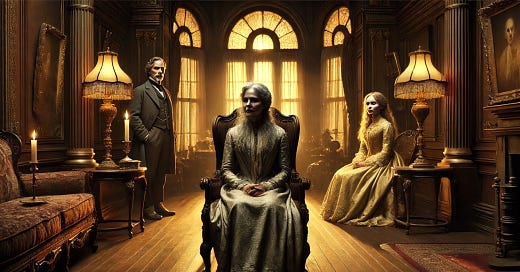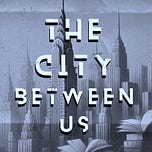Michael Arturo's "Suttle House" is a Victorian fable set in 1895 New York, exploring themes of evolving female roles, self-definition, identity, and the complexities of relationships. The narrative utilizes rich symbolism, particularly through the shared monocular vision of twin sisters Prudence and Abagail and the triangular architecture of Delmonico's restaurant. The story draws on theatrical traditions, including commedia dell'arte, Oscar Wilde's wit, and the structure of the American sitcom, to create a blend of humor, satire, and social commentary. The central conflict revolves around the intertwined lives of the twins and their relationship with the wealthy industrialist Nathaniel Suttle, raising questions about trust, deceit, and the nature of love.
Central Themes and Key Ideas:
Evolving Roles of Women and Self-Definition:
The core allegory centers on the twin sisters, Prudence and Abagail, representing contrasting perspectives on women's roles. Prudence is initially anchored in tradition and devotion to her husband, while Abagail embodies wanderlust and independence.
The reading of Sarah Brand's "New Woman" by Prudence, despite her visual limitation, is a significant catalyst for her exploration of changing societal roles and female agency. It highlights the burgeoning movement for women's empowerment in the late 19th century.
The narrative explores the sisters' struggle for self-definition, particularly concerning Nathaniel and the societal expectations placed upon them. Their actions, both deceptive and genuine, reflect their attempts to navigate and challenge these constraints.
The Duality of Perception and Monocular Vision:
The shared monocular vision of Prudence and Abagail is a central, multi-layered symbol. It physically embodies the "duality of perception—one eye fixed on tradition, the other blind to the possibilities of change"
Their reliance on each other's vision initially signifies their strong bond and intertwined nature: "They relied on each other to compensate for their visual impairment, their bond so strong that they often finished each other’s sentences."
However, this shared imperfection also highlights their limitations and inability to "truly see the world as others did."
The physical act of facing each other, with a sighted eye meeting a blind eye, is described as a "peculiar and almost poetic manifestation of their unique connection," representing "the balance they struck in life."
Identity, Impersonation, and Deceit:
The narrative extensively explores the blurring lines of identity, primarily through the sisters' impersonation of each other. This is initially a playful "game they played ruthlessly" but escalates into significant deception.
Architectural and Spatial Symbolism (Delmonico's):
Delmonico's restaurant, specifically its triangular shape, is presented as a powerful symbol within the narrative.
Abagails claimed the triangular design of Delmonico's "had not only influenced Nathaniel’s relationships with her and Prudence but had also cast an irrevocable spell over a prospective marriage, forever condemning it to exist as a ménage à trois.
"Suttle House" draws upon several theatrical and comedic traditions. It is described as a "sophisticated comedic fable" that weaves together elements from commedia dell’arte (stock characters, exaggerated traits), the wit and social commentary of Oscar Wilde (sharp dialogue, satire of societal expectations), and the structure and relatability of the American sitcom (focus on domestic dynamics, episodic feel). The narrative itself incorporates themes of performance, social masks, and mistaken identity, reminiscent of plays like Shakespeare's "The Comedy of Errors" and Oscar Wilde's "The Importance of Being Earnest."
What is the core conflict between Prudence and Abagail?
The core conflict between Prudence and Abagail stems from their competition for Nathaniel's affection and the secrets and deceptions surrounding their relationships with him. Prudence's suspicions about Nathaniel's fidelity and Abagail's confession of impersonating Prudence during the courtship at Delmonico's create a significant rift. The sisters' physical altercation and subsequent aging in different directions further highlight the fracturing of their bond and the consequences of their actions.
How does the story conclude?
The story concludes with a profound transformation in the relationships within Suttle House. Prudence, having gone completely blind, becomes dependent on Abagail, who in turn gains sight in her right eye and regains her youthfulness. Nathaniel, freed from deceit, finds joy in an honest life with Abagail. While Nathaniel and Abagail never marry, they live happily together after Prudence's death, their love story forever intertwined with the memory of Delmonico's and the complex dance of their intertwined lives. The ending suggests a triumph of forgiveness and acceptance, with Suttle House becoming a place of "truth and redemption."
Support by hitting the like button or leaving a comment.
Welcome to Michael’s Newsletter. Writer of contemporary political/social commentary, parodies, parables, satire. Michael was born and raised in New York City and has a background in theater and film. His plays have been staged in New York, London, Boston, and Los Angeles.
Michael also writes short literary fiction.














Share this post